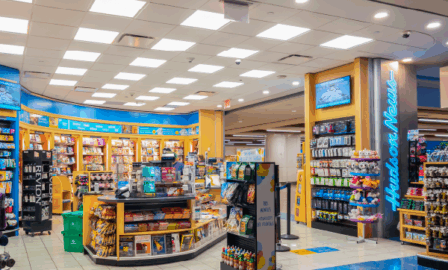Retail Reflections from 2022
As we step into the first few days of a new year, now is a good time to look back on retail in 2022: what we saw within the industry, what challenges existed, and how retailers should be adapting to succeed in the new year. On the surface, retail saw positive growth in 2022, reporting a 7.5% increase year over year through October. Initial returns for Black Friday 2022 were positive, with online sales breaking records at $9.12 billion (up 2.3% over 2021). Even with the positive growth, this certainly wasn’t an easy year for retailers, who have had to deal with continuing supply chain challenges and inflationary pressures while still balancing their investments in technology and curating positive experiences across channels. Looking ahead to 2023, retailers will need to continue to adapt to the challenges head-on by utilizing technology and analytics in new ways. Let’s dive into our retail experts’ key 2022 retail reflections.
Supply Chain Challenges
The supply chain continues to be an area where retailers must be resilient and creative to overcome ongoing challenges. Delays throughout the supply chain persisted in 2022, from increased lead times overseas, to domestic trucking shortages, to a lack of warehouse space due to increased inventory levels. Many of these issues are forecasted to carry on into 2023, so there will continue to be a premium on advanced planning and forecasting tools to better react to changes in demand or lead times.
Having both supply chain visibility and flexibility allows retailers to move quickly and adjust orders where they can, either through pulling orders up to meet increasing lead times or delaying orders to match softening demand or excess inventory levels. These excess inventory levels could come from the “pandemic backlog” and having multiple seasons of inventory hit the distribution centers at once, placing bets on inflation and buying more in advance, or changes in consumer preferences. Nike, for example, saw inventory up 65% in Q1 of 2022. These increased inventory levels are putting a premium on warehousing space, but also challenging retailers who have yet to fully invest in omnichannel technology that allows inventory to more freely be sold across channels from any location. Advanced Analytics continue to grow in importance for retailers who are looking to evaluate what the optimal inventory levels are as well as what price points or promotions will best help move excess inventory.
Managing Inflationary Challenges
As the year has progressed, inflation has created additional challenges for retailers, both in slowing growth and creating caution for 2023. Consumers have lost purchasing power as wages haven’t kept pace with rising prices, and average Americans are spending $445 more per month buying the same items they did a year ago. This caution has driven revenue estimates for 2023 down but has also created opportunities for retailers, as consumers reevaluate where they spend their disposable income.
Consumers were seen as “trading down” in 2022 – looking for lower-priced alternatives to their go-to products, which improved the standing of private label goods that carry a lower price tag. A recent survey shared that 70% of consumers believe private label brands can provide a similar, if not better, alternative than a name brand. Target and Walmart both saw success in 2022 with their private label brands, and others who have invested in building up in-house brands seek to capitalize on this trend moving into 2023. With consumers watching how they spend more closely, the timing and messaging of promotions and discounts increases in importance. Beyond simply the price, consumers want to feel that they are receiving a good deal and getting value out of their purchases. Moving in to 2023, it will be more important than ever to have the right technology in place to target consumers. Ensuring your team has the tools in place to make educated decisions and react in real time will help protect market share and win against other lower cost competition.
Managing Technology Investments
Since stores reopened in late 2020, retail has been in a state of “finding itself” when it comes to the in-person shopping experience. Pre-pandemic, there was significant industry chatter about overhauling the shopping experience, with high-tech stores, no checkout lines, and augmented or virtual reality throughout the stores. While these trends have still progressed in pockets, the real focus has been on the fundamentals – making sure stores and the shopping experience are operating efficiently and that a consumer can ultimately find the products they are looking for and purchase them in the manner they prefer.
Investments in omnichannel or unified retail technologies continue to be a priority, and retailers are placing an increased importance on analytics to improve decision-making and personalization within their current framework. 2023 will likely follow a similar path – and while some of the more cutting-edge technology will certainly grow for those retailers that have already built their foundational technology platform, we expect to see many double down on omni, analytics, and supply chain platforms to improve efficiencies and find cost savings throughout the organization.
Closing: 2022 Retail Reflections
2022 was a whirlwind of a year in the retail space, but as always, the industry remains resilient and ready to capitalize on the opportunities that are to come. As we move into 2023, and the likelihood of strongly managed budgets, there will be a push for retailers to focus their investments on critical areas that can deliver a solid return for the business. However, even with this focus, market leaders will still find a way to push the envelope and curate new and exciting experiences for their customers, improving loyalty and solidifying their place at the top of the industry.
To get in touch with our retail experts, contact us here.



